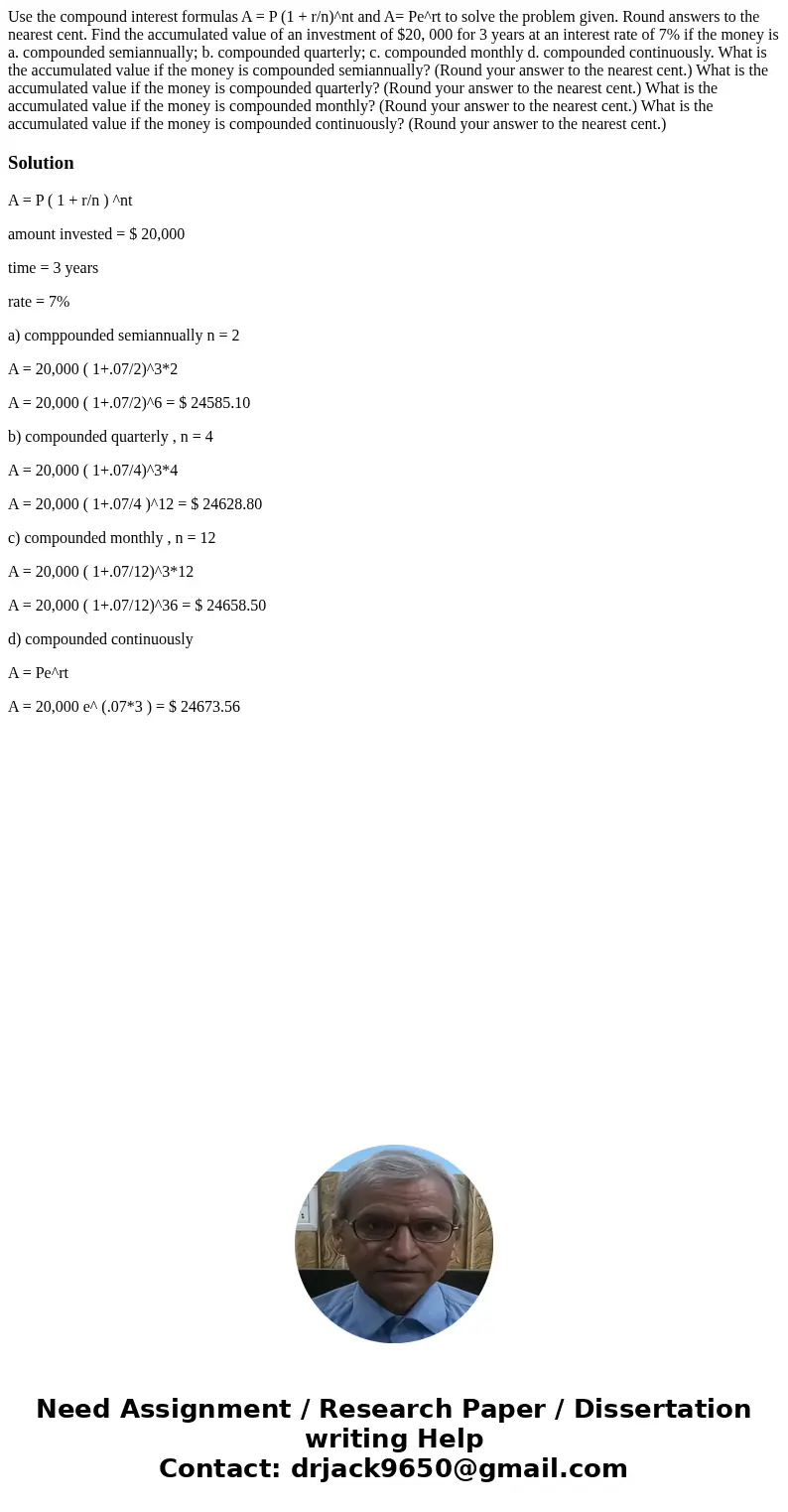Use the compound interest formulas A P 1 rnnt and A Pert t
Use the compound interest formulas A = P (1 + r/n)^nt and A= Pe^rt to solve the problem given. Round answers to the nearest cent. Find the accumulated value of an investment of $20, 000 for 3 years at an interest rate of 7% if the money is a. compounded semiannually; b. compounded quarterly; c. compounded monthly d. compounded continuously. What is the accumulated value if the money is compounded semiannually? (Round your answer to the nearest cent.) What is the accumulated value if the money is compounded quarterly? (Round your answer to the nearest cent.) What is the accumulated value if the money is compounded monthly? (Round your answer to the nearest cent.) What is the accumulated value if the money is compounded continuously? (Round your answer to the nearest cent.) 
Solution
A = P ( 1 + r/n ) ^nt
amount invested = $ 20,000
time = 3 years
rate = 7%
a) comppounded semiannually n = 2
A = 20,000 ( 1+.07/2)^3*2
A = 20,000 ( 1+.07/2)^6 = $ 24585.10
b) compounded quarterly , n = 4
A = 20,000 ( 1+.07/4)^3*4
A = 20,000 ( 1+.07/4 )^12 = $ 24628.80
c) compounded monthly , n = 12
A = 20,000 ( 1+.07/12)^3*12
A = 20,000 ( 1+.07/12)^36 = $ 24658.50
d) compounded continuously
A = Pe^rt
A = 20,000 e^ (.07*3 ) = $ 24673.56

 Homework Sourse
Homework Sourse